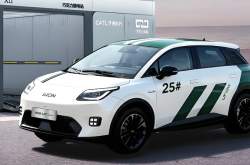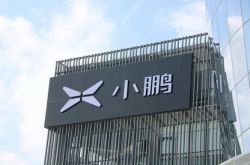Global Sales Drop 21.28% YoY: Is Model Y Being Pushed to Innovate by Chinese Automakers?
![]() 01/13 2025
01/13 2025
![]() 673
673
"If not for Chinese competitors, Model Y would still be resting on its laurels."
Editor | Lu Xucheng
On January 10, 2024, China's most popular electric vehicle finally ushered in a significant upgrade.
Tesla China's official website today unveiled an updated Model Y with a starting pre-sale price of RMB 263,500.
The new Model Y showcased on the official website draws inspiration from cyber off-road vehicles and autonomous electric vehicles, featuring a distinctive through-type light strip and diffuse reflection technology for its taillights. The acceleration from 0 to 100 km/h has been enhanced to a swift 4.3 seconds, with an estimated maximum range of 719 km (CLTC). All versions come equipped with Tesla's state-of-the-art autopilot hardware (AI 4), offering over 10 times the driving safety of ordinary vehicles. Standard features include a large buffer zone, remote airbags, a high proportion of high-strength body materials, and an integrated die-casting process for an ultra-rigid body.
Days of Easy Profits
In December 2024, Model Y officially announced that it was the national sales champion for passenger vehicles in the past year, with cumulative sales exceeding 556,000 units (some data indicate 480,000 units, not ranking first in pure electric or models priced above a certain threshold, marking a slight decline from 2023). Media estimates suggest that Model Y may still have been the best-selling model globally in 2024, with annual sales of 865,900 units, representing a year-on-year decline of 21.28%.
Model Y, Tesla's fifth model, was unveiled in Los Angeles on March 15, 2019. Available in four versions—Standard Range, Long Range, Dual Motor All-Wheel Drive, and Performance—deliveries began in the fall of 2020. Sharing the same architecture platform as Model 3 (75% of Model Y's parts are identical), this SUV became an instant hit upon its launch. Its gross margin (reaching 29.4% in 2021) far surpassed that of other electric vehicle models (BYD's gross margin for automobiles was only 12.76% in 2021), making it a cornerstone model supporting Tesla's market value.
In 2022, Tesla Model Y sold 747,000 units globally, ranking third after Toyota RAV4 (1,016,000 units) and Corolla (992,000 units). In 2023, Model Y delivered a total of 646,000 units domestically (including exports), securing the sales crown. That year, Model Y (1.1 million units) surpassed Toyota Corolla (which had topped the charts for 37 years) to become the best-selling model globally, marking the first time an electric vehicle outsold a fuel vehicle.
However, critics have noted that since its launch in 2019, Model Y has not undergone any significant model changes or new launches, yet its sales have remained robust, often deemed a miracle. At the dawn of 2025, this model has finally undergone an upgrade.
According to Blue Shark Hard Tech, after five years of enjoying a comfortable market position, Model Y has finally been innovated, and consumers owe a debt of gratitude to Chinese electric vehicle manufacturers.
Pushed into a Corner by Chinese Competitors
Model Y's popularity stems from the lack of significant competition in the pure electric SUV segment priced between RMB 250,000 and RMB 350,000. Relying on Tesla's brand power, extensive global charging network, and advanced intelligent driving capabilities, it has maintained a strong competitive edge. Tesla began lowering prices to around RMB 250,000 in 2023, attracting a surge of consumers.
Recently, Tesla announced that its global deliveries in 2024 totaled 1,789,200 units, marking a slight year-on-year decrease of 1.07%, the first decline in a decade.
This decline is primarily due to the growing strength of Tesla's Chinese competitors. BYD sold 4.25 million vehicles in 2024, including 1.76 million pure electric vehicles, just 30,000 units shy of Tesla. Among these, BYD's Song series, which competes directly with Model Y, saw its sales soar, with 124,868 units sold in December 2024, double that of Tesla's Model Y, which ranked second.
New models like the ZEEKR 7X, LeDao L60 (which has seen explosive sales since its launch due to its cost-effectiveness), and AVATR 07 are fiercely competing with Model Y by offering extreme value for money, further eroding its market share. Xiaomi's SU7, which rivals Model 3, delivered 135,000 units in 2024. Xiaomi's SUV pure electric model, which targets Model Y, is already undergoing large-scale road testing, posing as another formidable competitor.
Without new models, Model Y has had to rely on price reductions to attract customers. In the second half of 2024, Tesla increased its price incentives, introducing a 5-year interest-free policy and a RMB 10,000 discount on the final payment for Model Y purchases.
These frequent price reductions have led to a decline in its gross margin, from nearly 30% in 2021 to around 20%, while BYD's gross margin for automobiles in the first half of 2024 reached 23.94%. To boost its gross margin, Tesla must either launch new models or innovate its existing ones (drawing from the experience of Toyota RAV4, where model changes and innovations have proven effective).
Moving forward, in addition to introducing new models, Tesla will rely on intelligent driving (FSD) to attract consumers, an area where Chinese competitors also have ambitious plans. Having established a foothold, Chinese new energy vehicle manufacturers such as Li Auto and Xpeng have stated that their founders are fully committed to AI and intelligent driving, further narrowing the gap with Tesla.





